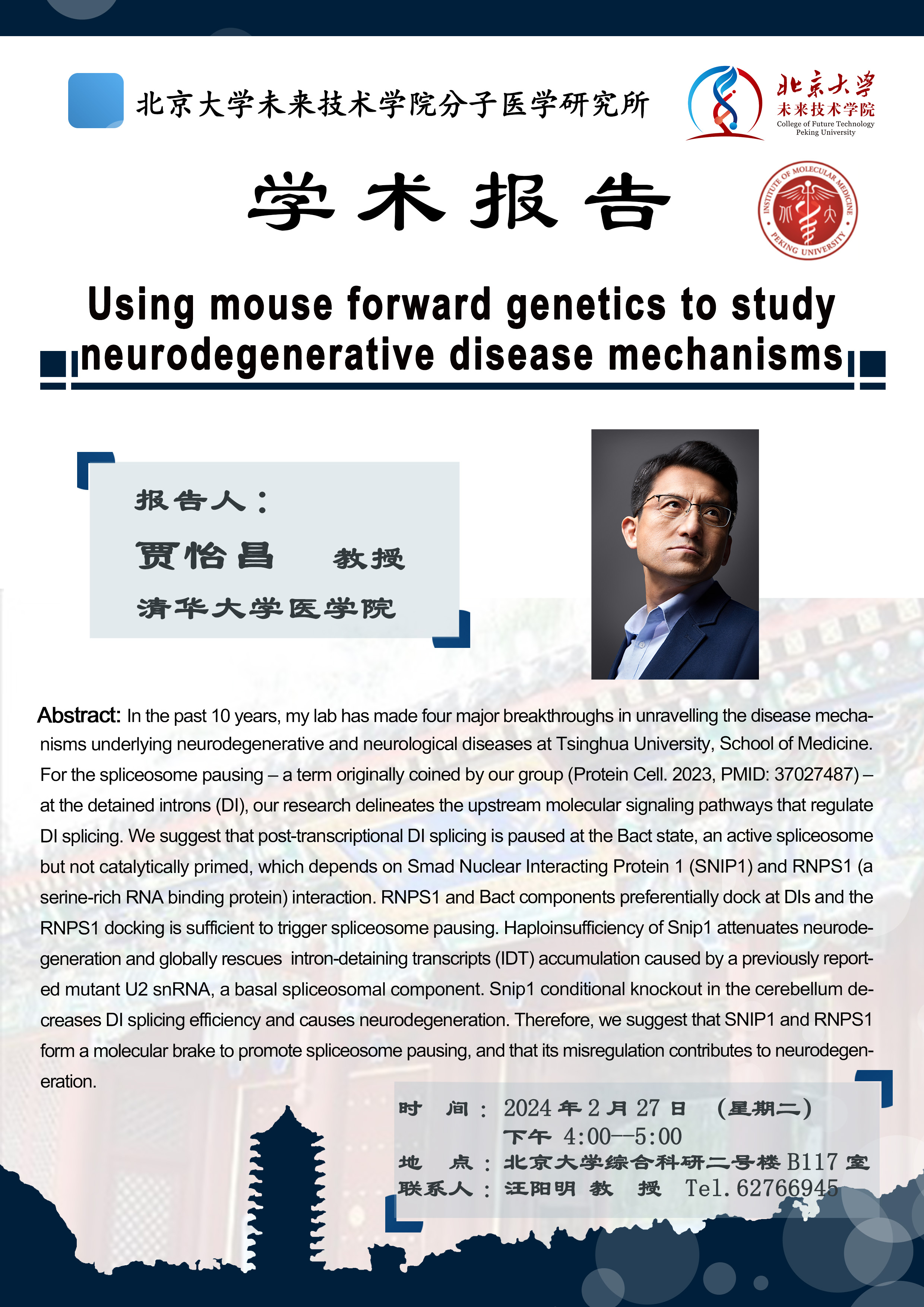
Speaker: Jia Yichang(Tsinghua University)
Time: 16:00-17:00 p.m., February 27, 2024, GMT+8
Venue: B117, Research Complex #2, PKU
Abstract:
In the past 10 years, my lab has made four major breakthroughs in unravelling the disease mechanisms underlying neurodegenerative and neurological diseases at Tsinghua University, School of Medicine. For the spliceosome pausing - a term originally coined by our group (Protein Cell. 2023, PMID: 37027487)-at the detained introns (DI), our research delineates the upstream molecular signaling pathways that regulateDI splicing. We suggest that post-transcriptional DI splicing is paused at the Bact state, an active spliceosome but not catalytically primed, which depends on Smad Nuclear Interacting Protein 1 (SNIP1) and RNPS1 (a serine-rich RNA binding protein) interaction. RNPS1 and Bact components preferentially dock at Dls and theRNPS1 docking is sufficient to trigger spliceosome pausing. Haploinsufficiency of Snip1 attenuates neurodegeneration and globally rescues intron-detaining transcripts (IDT) accumulation caused by a previously reported mutant U2 snRNA, a basal spliceosomal component. Snip1 conditional knockout in the cerebellum decreases DI splicing efficiency and causes neurodegeneration. Therefore, we suggest that SNIP1 and RNPS1form a molecular brake to promote spliceosome pausing, and that its misregulation contributes to neurodegeneration.
Source: College of Future Technology, PKU
